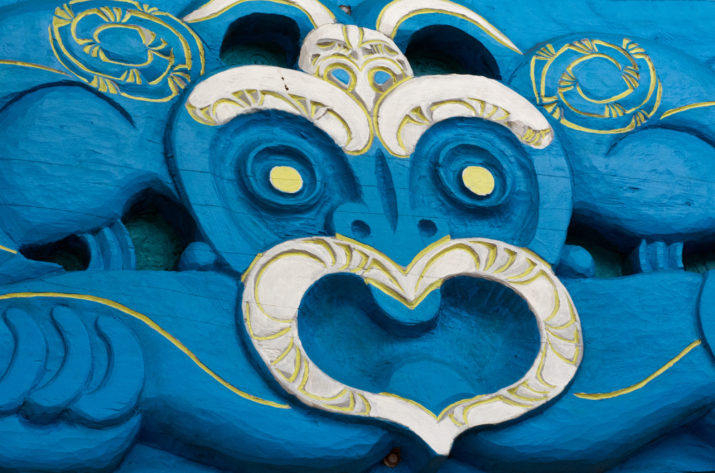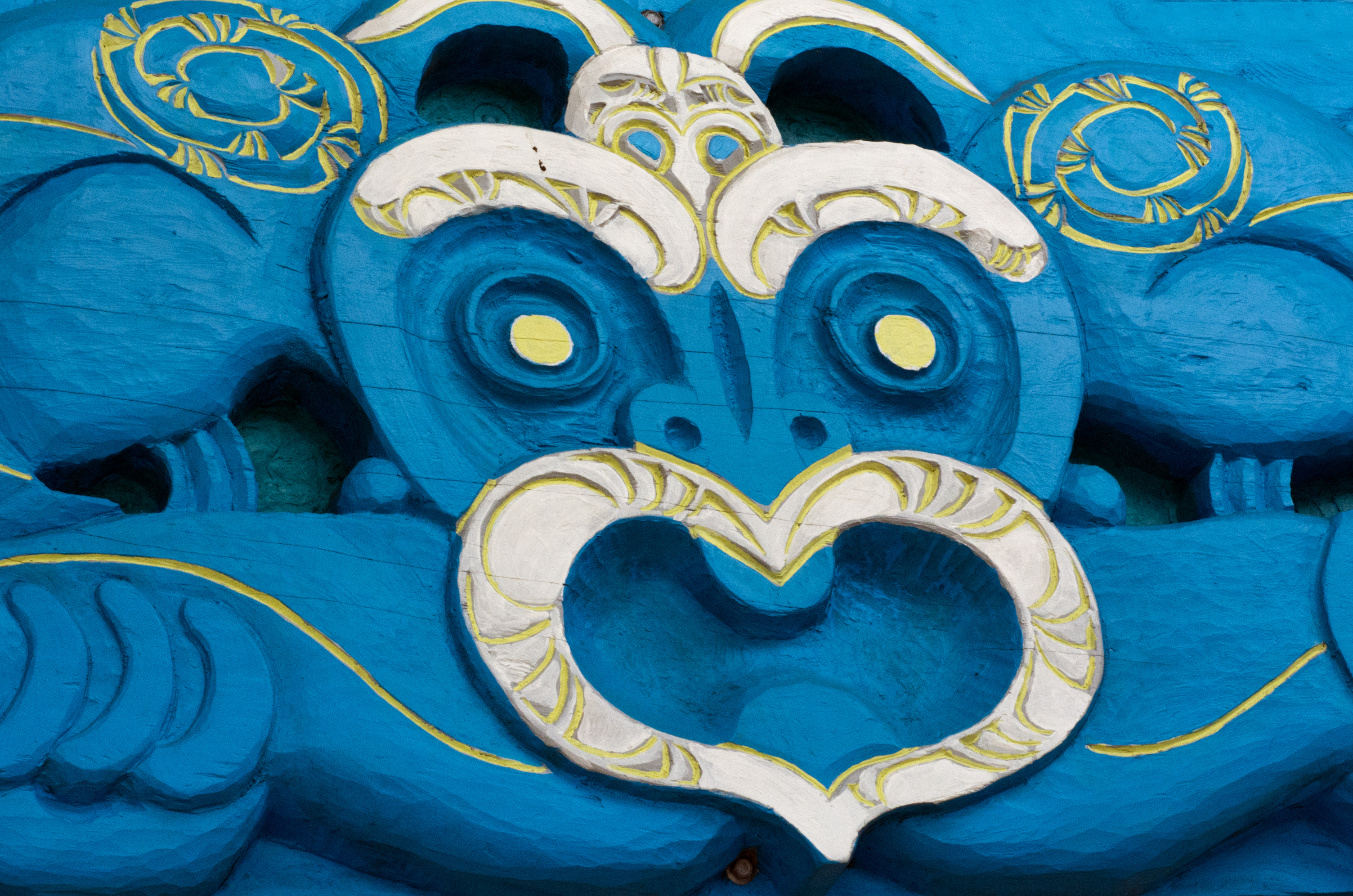

Transnational migration and questions of identity are amongst the most powerful forces of social transformation in contemporary Europe.[1]
“Visual culture,” Jane Lydon writes “can define boundaries between people, supporting perceived hierarchies of race, gender and culture, and justifying arguments for conquest and oppression.”[2] As images of migration and refugees in crisis populate mainstream news media, visual tropes[3] such as the “wave of foreigners” and the “disorderly crowd,”[4]emerge to reinforce a stereotype of migration as unnatural. However, this negative view of migration is Eurocentric, as migration has historically been integral to improved conditions for humans and animals alike. New Zealand-born Samoan artist Greg Semu explains:
History has proven that “migration” has been necessary for the survival of the family, the tribe, and the human race. Migration is organic and part of mother nature’s natural order, like the waves of the ocean. I think it is natural for humans to migrate and roam like the Bedouin’s (sic) of the desert or the Tibetan high lands, all nomadic tribes and peoples.[5]
Semu suggests migration has an ancient narrative and that the unifying thread shared by all people of the Pacific is colonization.[6] Moreover, visual tropes of migration depicting non-European migrants as abject are a construct of what E. Ann Kaplan calls the imperial gaze: a gaze that is one-directional since the oppressor defines how the oppressed are seen, as well as how they see themselves. The imperial gaze has long been at work in European paintings of indigenous, colonized peoples. In his work, Semu seeks to unmask the gaze of the European colonizer. In a gesture to reclaim Māori Migration, Semu exhibited a large-scale photography series entitled Raft of the Tagata Pasifika (People of the Pacific),[7]at the National Gallery of Victoria, Melbourne, Australia, from 10 June to 11 September 2016.[8] In this artwork, Semu reimagines the migration of the Māori from Polynesia to Aotearoa (the Māori name for New Zealand, meaning “Land of the Long White Cloud”).[9]
For his 2016 photographic series, Semu appropriates images from two nineteenth-century European history paintings: Théodore Géricault’s Le radeau de la Méduse[10] [The Raft of the Medusa] (1818-19) and Louis John Steele and Charles F Goldie’s The Arrival of the Māoris in New Zealand[11](1898). Based on Géricault, Steele and Goldie depict a fantasy of emaciated Pacific Islanders crossing the South Pacific rather than a deliberate voyage of exploration[12] in search of trade and resources.[13] The painting thereby influenced the public view of how Māori travelled and their claim to New Zealand – further substantiating what Roger Blackley calls a “widespread colonial mythology of the ‘dying race.’”[14]Māori objected to the painting as early as 1902 as an erroneous portrayal of the history of their migration.[15]
Semu’s exhibit depicts Māori as pioneers of navigation rather than victims of an ill-planned voyage.[16] In the striking Raft series, Semu recasts native residents of the Cook Islands, as well as himself, and appropriates elements from both the Géricault and the Steele and Goldie paintings to challenge and confront some of the great misconceptions in the mythology of New Zealand’s discovery and Māori migration. To paraphrase Reuben Friend, director of Pātaka Art+Museum in Porirua, James Cook was not the first to discover Aotearoa, but the popular belief that Kupe discovered it is not entirely correct—many Māori credit Maui with the discovery of Aotearoa, “pulling it up out of the sea from beyond the horizon.”[17] By navigating a variety of cultures, Semu creates a new visual language to provide an alternative view of history while criticizing European perspective of indigenous peoples.
What can Semu’s appropriation of European painting teach us about the history of migration? Why is appropriation particularly relevant in postcolonial art? This article seeks to show that Greg Semu’s photography series Raft of the Tagata Pasifika teaches us about the history of perception – of the gaze that looks one way through a colonial lens: the imperial gaze of the colonizer toward the colonized “other.” I argue Semu parodies a construct of colonialism and the view of migratory peoples formed through the imperial gaze. Semu combines ancient oral traditions of migration that survive in the Pacific with references to European tableaux, which he calls “crude concoctions of myth and romanticism,”[18] to multiply the transcultural layers of signification. Amy L Hubbell argues that “layering” in the visual arts is a means of scarring over and highlighting both psychological and physical wounds.[19] The Raft of the Tagata Pasifika underscores the violence of these images and the trauma suffered by indigenous peoples. Semu’s visual art focuses on the consequences of Pacific Christianization as colonialism collided with indigenous tribes.[20]
Colonial lens
Māori migration is the subject matter of “probably the best-known history painting ever produced in New Zealand:” Steele and Goldie’s The Arrival of the Māoris in New Zealand (1898).[21] Before colonization,[22] the Māori had a strong oral culture in which rich, detailed history and legend were recounted orally. They recited genealogies (whakapapa) and common ancestors, and communicated knowledge through organized groups in their society.[23]However, when Steele and Goldie decided to create a History Painting depicting Māori migration to New Zealand, instead of considering the traditional, oral narratives as described by the Māori themselves, they chose to look back to France, to a painting by Romantic master Géricault, whose Raft of the Medusa (1819) they knew from their time spent in Paris. In addition to negating the voice and agency of Māori descendants of the migration, Steele and Goldie imported a European element to the visual story, depicting migration as against nature and the Māori as wretched and miserable. By appropriating the images in Géricault, Steele and Goldie reflected Māori history through a colonial lens.
English-born Louis John Steele trained in Paris in the 1860s. Once established as an artist in New-Zealand, he encouraged his protégé Charles F. Goldie to study at the Académie Julien (Paris), where his training involved copying famous works from the Louvre, namely Géricault’s Raft of the Medusa—the inspiration for The Arrival of the Māori s in New Zealand.[24] The Steele and Goldie painting shows a group of Māori as exhausted (possibly anthropophagic—a remnant from the Géricault[25]), at the moment when they first see the land they would go on to call Aotearoa.[26] Like a lot of colonial history-painting, The Arrival includes numerous assumptions about the event. Despite the many historical inaccuracies, the Steele and Goldie painting was a great success amongst European settlers in New Zealand, who were seeking to establish a national identity in art and literature. The subject matter of The Arrival resonated with new colonists for it reflected their own terrors and hopes as they journeyed and searched for a new home.[27] European settlers used this depiction of the indigenous as haggard and desperate to argue that the Māori were little more than immigrants who discovered New Zealand by chance, thereby strengthening European claim to the land.
Like many of Semu’s artistic endeavors, the Raft stems from his interest in the European colonization and Christianization of the Pacific, which began in the sixteenth century. The encounter of indigenous tribes and colonial imperialism led to the creation of many so-called history paintings, although historical inaccuracy is a common theme in European history paintings of colonized indigenous peoples in the Pacific. Semu’s re-enactment of the Steele and Goldie shines light on the painting’s historic inaccuracies. As Lisa Havilah suggests, “there has been a long history of shifting definitions of Oceania… and through many diverse foreign perspectives Oceania has shifted as each different colonial lens has been applied.”[28] It is this series of “different colonial lens” that interests me in Semu’s work. That Steele and Goldie look back to Europe for references to inform a visual encoding of Māori knowledge, highlights a specific way of seeing “through a colonial lens.” As the artists embellished and fabricated traditional migration legends, they transposed a European view onto New Zealand’s indigenous population without regard to Māori experience—this is the imperial gaze.
Imperial Gaze
That Europeans saw indigenous culture through a colonial lens points toward a theory of seeing developed surrounding colonialism: the imperial gaze. In the 1997 book Looking for the Other: Feminism, Film, and the Imperial Gaze, E. Ann Kaplan defines the gaze in relation to the “look” and she argues within western patriarchal cultures, the imperial gaze cannot be separated from the male gaze first theorized by Laura Mulvey in the 1975 essay “Visual Pleasure and Narrative Cinema.”[29] As Kaplan attempts to draw parallels between the structure of the male gaze and the structures of the imperial gaze, a subtheme of the book is then postcolonialism and the male gaze. Yet while Mulvey made no distinction between the “look” and the “gaze,” Kaplan differentiates the “look” as a process and a relation, while the “gaze” connotes one-directional, subjective vision. Looking implies an inquisitive interest and the wish to know, while the “gaze,” on the other hand, signifies anxiety and a wish to deny.[30] The gaze issues from an active subject who has no interest in the object. Rather, he (sic) is consumed by anxieties of his own. In this gaze structure, the active subject stands opposite a passive object.[31]
It is Kaplan’s anxiety-ridden gaze that Semu’s photography attempts to scrutinize. The imperial gaze attempts to deny; the imperial gaze is one-directional, situating colonizer as subject and colonized as object. Semu critiques the structure of the imperial gaze towards the indigenous Other by staging a scene of Cook Island residents re-enacting scenes from well-known European iconography to challenge the visual history of colonization, which was always depicted from the viewpoint of the colonizer.
Semu’s Raft
Greg Semu’s exhibition is a series of large-scale photographic works he has manipulated and reconstructed. For the 2016 exhibit, Semu chose a black exhibition space to display monumental light box images since this makes them more like paintings. Semu advises the Raft of the Tagata Pasifika is a series comprising two main works: “The Raft”[32] (based on Géricault) and “The Arrival”[33] (based on Steele and Goldie). In the photograph “The Raft” Semu himself features front and center, collapsed across the raft nude, all his Samoan tattoos on display. Semu includes his self-portrait to signify his own struggle, “growing up as a child I was persecuted for being an immigrant,”[34] as well as all Samoan migrants. Semu explains that Samoans faced a complex situation in New Zealand. At first, they were welcomed as a workforce for factories, but soon Samoans found they were not welcome to stay.[35]
In the diptych photos “The Arrival” [1 and 2], (Semu’s revision of the Steele and Goldie), “instead of starving wretches you get tense sinewy torsos.”[36] As he executes large compositions of navigational voyage, Semu’s work draws attention to the colonization of the Pacific and the ongoing fight of Māori people for recognition of their rights and ownership of their own story and oral histories.[37]
Appropriation Art
Insofar as his photographs quote famous European tableaux paintings, we can place Semu’s work in relation to Appropriation art. Appropriation artists deliberately copy images in the hope that the viewer will recognize and recall the original image in the new context, demonstrates Beth Gersh-Nesic. This borrowing of the image recontextualizes the meaning of the original image.[38]
In the introduction to the 2009 book Appropriation, editor David Evans notes that appropriation was an integral part of colonialism. Hence, Evans claims, it is not surprising that representation in post colonialism involves the re-taking of what was possessed without authority.[39] Colonial occupation and Appropriation art are analogous as each involves a shift of possession from one group to another without permission from the original owner.[40] Parallels of colonialism and parodies of the imperial gaze abound in contemporary appropriation art as it graphically depicts history and the journey from local indigenous communities to global European networks. An integral part of colonialism was appropriation (without authority) of that which was possessed by the “other;” imperialism capitalized on indigenous communities for political and capital gain on a global scale.[41]
In Semu’s art, the postmodern and the postcolonial collide. Semu’s work follows a postmodern trend, born of skepticism and suspicion. Highly influenced by the works of Jacques Lacan, postmodern art challenges the notion that there are universal certainties by embracing complex, contradictory layers of meaning. More specifically, postmodern photography, highly inspired by Roland Barthes’ La mort de l’auteur [The Death of the Author] (1968) questions concepts of originality and authenticity.[42] Semu’s photography series is postmodern because it challenges received accounts of history; it displays ambiguity, innovation, and complexity on several layers. Semu’s work is postcolonial as it reinterprets the story of Māori migration by giving a voice and a sense of agency to the traditional indigenous account of their own history.
While Géricault’s Raft of the Medusa is a powerful visual depiction of true events, the Steele and Goldie painting disinforms the public by silencing the subjective voice of the people it portrays. Semu reviews and revises Māori migration by visually reinterpreting the oral narratives still existing in Māori culture to unmute the people’s voice. He appropriates famous history paintings in order to provoke a dialogue with those who do not speak his own language.
When Semu was growing up, he was surrounded by conflicting cultural icons and narratives: European Christian and Pacific Māori and Samoan visual and oral cultures coexist despite their obvious contradictions. Images of Jesus Christ are seen alongside traditional Māori koru[43] designs (also known as pitau) as well as Samoan siapo and tatau.[44] Semu struggled to understand how Christianity had come to endure in the post-colonial Aotearoa/ New Zealand given the indigenous Pacific culture predates Christ by at least 1,000 years.
For Greg Semu, migration is about the search for a better life, yet he stresses that refugees and migrants often cling to their ancestral homes. He contends that migrants from the Pacific Islands hope to return to the lands of their families. Semu adds a message to Europe now, “I am sure if you let refugees migrate to Europe to escape war, famine, death, and persecution, when peace comes back to their lands they will organically also return to their homelands.”[45] Semu’s images invite us to question, reconsider, and re-interpret our previous understanding of history, society, and culture—especially when considering migration.
Jenny Davis Barnett is an academic in research and teaching at the University of Queensland. Her research interests include French Studies, Visual Culture, and Gaze Theory.
References
100% Pure New Zealand. “The Arrival of the Māori.” Accessed 26 November 2019. https://www.newzealand.com/us/feature/early-settlement/
Auckland Art Gallery. “The Arrival of the Māoris in New Zealand.” Accessed 26 November 2019.https://www.aucklandartgallery.com/explore-art-and-ideas/artwork/166/the-arrival-of-the-maoris-in-new-zealand
Bassnett, Sarah. “Visual Tropes of Migration Tell Predictable but Misleading Stories.” The Conversation, 2018. https://theconversation.com/visual-tropes-of-migration-tell-predictable-but-misleading-stories-106121
Blackley, Roger. “Louis J. Steele and Charles F. Goldie: The Arrival of the Māoris s in New Zealand (1898).” Emerging Infectious Diseases 7, no. 5 (2001): 914. http://www.ncbi.nlm.nih.gov/pmc/articles/PMC2631871/pdf/11795236.pdf
Bleby, Michael. “New Take on Body of Work.” The Australian Financial Review (Melbourne), 4 June 2016, 49.
Butler, Elisha. National Gallery Victoria. “In Conversation: Greg Semu.” Art Gallery exhibition conversation with the artist. NGV Gallery Article (2016). http://www.gregsemu.photography/the-raft-of-the-tagata-pasifika
Collazo, Cicily J. “The Rules of Appropriation from the Perspective of a Contemporary Artist.” Master of Arts Master’s, Trinity College, 2016.
Evans, David. Appropriation. Documents of Contemporary Art. Edited by Iwona Blazwick. London: Whitechapel Gallery, 2009.
Friend, Reuben. “Calling out Cook: Porirua’s Pātaka Gallery Confronts the Complexities of Tuia250.” The Spinoff, 11 September 2019, https://thespinoff.co.nz/art/11-09-2019/calling-out-cook-poriruas-pataka-gallery-confronts-the-complexities-of-tuia250/?fbclid=IwAR3MDvX1ng3RTJrCrPNyfeEnxIa6ZuYkB5gYn9s2dxJlxf7rLQliFWNkvag
Gersh-Nesic, Beth. “What Is Appropriation Art?” ThoughtCo, Updated 23 May 2019, https://www.thoughtco.com/appropriation-appropriation-art-183190
“Greg Semu Photography.” 2019, accessed 26 November 2019, http://www.gregsemu.photography/
Havilah, Lisa. “The Smell of One Boat Burning: ‘Oceania’ in Wellington.” Art and Australia 49, no. 2 (2011): 226-29.
Hubbell, Amy L. “Layering over the Wounds of Algeria in Contemporary Pied-Noir Art.” EuropeNow (2018), https://www.europenowjournal.org/2018/02/28/layering-over-the-wounds-of-algeria-in-contemporary-pied-noir-art
Irwin, Geoff. “Pacific migrations – Why explore?” Te Ara – the Encyclopedia of New Zealand (2005/2017). Accessed 1 December 2019 http://www.TeAra.govt.nz/en/pacific-migrations/page-8
Kaplan, E. Ann. Looking for the Other: Feminism, Film, and the Imperial Gaze. New York: Routledge, 1997.
Lydon, Jane. Visualising Human Rights. Edited by Jane Lydon. Crawley Western Australia: University of Western Australia Press, 2018.
Martet, Cécile. “L’Œuvre à la Loupe: Le Radeau de la Méduse de Géricault.” Kazoart Blog, Chefs d’œuvre à la loupe (2018), https://www.kazoart.com/blog/loeuvre-a-la-loupe-le-radeau-de-la-meduse-de-gericault/
Ponzanesi, Sandra, and Berger, Verena. “Introduction: Genres and Tropes in Postcolonialcinema(s) in Europe.” Transnational Cinemas 7, no. 2 (2016): 111-17.
Rainforth, Dylan. “Ancient Narratives.” Art Monthly Australia, no. 290 (2016): 14.
Rubeli, Ella. “Photographer Reinterprets Ancient Narratives of Māori Arrival in New Zealand.” The Sydney Morning Herald (https://www.smh.com.au/), 10 June 2016, https://www.smh.com.au/national/photographer-reinterprets-ancient-narratives-of-maori-arrival-in-new-zealand-20160610-gpgs1a.html
Ryan, Judith. “Greg Semu: The Raft of the Tagata Pasifika (People of the Pacific), 2014–16.” Updated 10 June 2016, accessed 27 September 2019, https://www.ngv.vic.gov.au/essay/greg-semu-the-raft-of-the-tagata-pasifika-people-of-the-pacific-2014-16/
Verass, Sophie. “New Work by Samoan Artist Depicts Māori Settlement.” NITV SBS, Updated 13 June 2016, accessed 19 November 2019, https://www.sbs.com.au/nitv/article/2016/06/13/new-work-samoan-artist-depicts-maori-settlement
Wilson, John. “History – Māori Arrival and Settlement.” Te Ara – the Encyclopedia of New Zealand (2005).http://www.TeAra.govt.nz/en/history/page-1
Zarzycka, Marta, and Kleppe, Martijn. “Awards, Archives, and Affects: Tropes in the World Press Photo Contest 2009–11.” Media, Culture, and Society 35, no. 8 (2013): 977-95. https://doi.org/https://doi.org/10.1177/0163443713501933
[1] Ponzanesi and Berger 111.
[2] Lydon 1.
[3] I understand ‘visual tropes’ as “conventions that remain unchanged despite their travels across the visual sphere, gaining professional and public recognition and having a strong affective impact,” Zarzycka and Kleppe 977.
[4] Bassnett.
[5] Greg Semu, facebook message to the author, 14 August 2019.
[6] Rainforth 14.
[7] See http://www.gregsemu.photography/the-raft-of-the-tagata-pasifika
[8] See https://www.ngv.vic.gov.au/exhibition/greg-semu/
[9] 100% New Zealand.
[10] See https://www.louvre.fr/en/oeuvre-notices/raft-medusa
Géricault’s painting depicts the true events of a shipwrecked French frigate (2 July 1816). For more information, see https://www.lefigaro.fr/histoire/culture/2014/07/02/26003-20140702ARTFIG00222-2-juillet-1816-le-naufrage-de-la-meduse.php.
[11] See https://www.aucklandartgallery.com/explore-art-and-ideas/artwork/166/the-arrival-of-the-maoris-in-new-zealand
[12] Ryan.
[13] Irwin.
[14] Blackley 914.
[15] Blackley 914.
[16] Verass.
[17] Friend.
[18] Ryan.
[19] Hubbell.
[20] Rubeli.
[21] Auckland Art Gallery.
[22] Recent scientific evidence shows the Māori settled New Zealand in the late 13th century (ca. 1288-1300). See https://www.landcareresearch.co.nz/science/plants-animals-fungi/ecosystems/prehistoric-settlement/human-arrival
Englishman James Cook first sighted New Zealand on 6 October 1769. The initial encounter with Māori was not a success – an incident occurred in which some Māori were killed. See https://teara.govt.nz/en/european-discovery-of-new-zealand
[23] Wilson.
[24] Blackley 914.
[25] After 13 days at sea on a make-shift raft, the men ravaged by thirst and hunger, the voyage ended in murder and anthropophagy. Only ten of the 400 men survived (Martet).
[26] Rubeli.
[27] Auckland Art Gallery.
[28] Havilah 226.
[29] Laura Mulvey, “Visual pleasure and narrative cinema,” Screen 16, no. 3 (1975): 6–18.
[30] Kaplan xvi.
[31] Kaplan xvii, xviii.
[32] See https://www.ngv.vic.gov.au/explore/collection/work/122309/
[33] See https://www.ngv.vic.gov.au/explore/collection/work/120640/
[34] Butler 64.
[35] Butler 61.
[36] Bleby.
[37] Verass.
[38] Gersh-Nesic.
[39] Evans 19.
[40] Collazo 5.
[41] Evans 19.
[42] Here we think of the so-called “Pictures Generation” and artists such as Cindy Sherman and Richard Prince from the 1970s and 80s. For more information see https://www.tate.org.uk/art/art-terms/p/pictures-generation
[43] Sprial. A stylized fern-leaf motif in Māori carving and tattooing (Oxford Dictionary).
[44] Siapo is a Samoan cloth made from bark. Tatau is the traditional Samoan art of tattoo.
[45] Greg Semu, facebook message to the author, 14 August 2019.
Published on January 16, 2020.
Photo: Figure of a Maori Idol | Shutterstock




